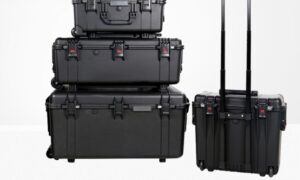Block bottom bags observe high demand in the market because of their solid level bottom, which provides shelf stability. The safe base is ideal for a range of consumer goods packaging, such as cereal, coffee, tea, rice, and many more. Block bottom bags are a great alternative to expensive paper bags, which is likely to work in favor of the global block bottom bags market. It is widely utilized in different sectors and is shaped like a brick. This packaging type has replaced the conventional stand-up pouch. Block bottom bags are commonly used in the packaging industry, especially in the food industry. Plastic is expected to account for a significant portion of the global block bottom bag market in terms of material.
Transparent Packaging Solutions to Assist in Increasing Sales
Clear packaging techniques are now being used by block bottom bag makers. The goal is to boost sales, and clear packaging helps with consumer trust and product visibility. A package’s transparency is commonly misinterpreted as a sign of the product’s quality. Clear packaging is becoming increasingly common, particularly in the food industry. This is especially advantageous in the consumer goods business, where product uniqueness is a top priority for producers. Bags can be used to produce translucent surfaces because they offer more gloss and transparency to the product. Labeling, printing, and other packaging forms are reduced because the bulk of the surface is meant to provide visible packing. At the point of sale, a large number of consumers make purchase decisions, and packaging is likely to influence those decisions. As a result, the global block bottom bags market is expected to grow as these packaging methods become more popular.
Request a Sample –
https://www.transparencymarketresearch.com/sample/sample.php?flag=S&rep_id=76928
Flexible Packaging Formats Give Sustainability to Aid Market Growth in Block Bottom Bags
Flexible packaging materials provide numerous advantages over rigid packaging materials in terms of sustainability. Low raw material use, low energy consumption, minimal waste output, and low carbon footprint are just a few of them. Reduced environmental effect can be achieved by reducing the quantity of material used in packing. Governments all around the globe are concentrating on enacting strict rules addressing the reuse and recyclability of plastics. The future demand for flexible packaging is projected to be fueled by the introduction of such regulations to improve sustainability.
Furthermore, producers are concentrating on product developments that absorb food odor, limit oxygen migration, preserve food for extended periods of time, and have a high-end look while also providing the sustainability benefits provided by block bottom bags.



































